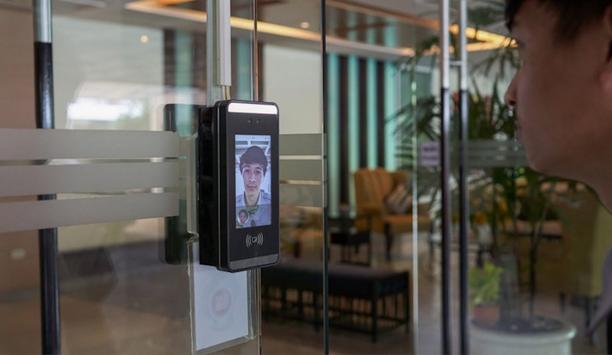 |
| Traka asset management solutions helped police to control keys and manage access to equipment |
Just as Police Forces across the country take pride in serving their communities, so too Traka takes pride in serving the Police with asset management solutions that can control keys and access to everything from police vehicles to lockers; used for managing access to equipment such as radio terminals, gas, breathalysers, dragon lights and even firearms.
Here we look at how these intelligent systems help ensure better security and management control for Thames Valley and Northamptonshire Police, just two of the many UK Forces already using Traka solutions.
Secure police radio communications using the Airwaves Network is an accepted and everyday part of modern policing, with each officer having their standard issue radio – but what happens when one goes wrong or gets damaged? “With over 5,000 airwave radios in use across the Thames Valley Force, we need to be able to make replacements available day or night, and quickly,” says Julian Smith, Airwave Systems Engineer, Thames Valley Police. He goes on to explain how this is managed effectively and at low cost.
“Obviously we don’t want an officer driving from Banbury to Oxford just to get a replacement; but equally these are important assets and we can’t have spares just lying around everywhere with the potential of getting lost or falling into the wrong hands.”
Replacements are held in 29 locations across the region. Officers needing a spare or replacement radio access the electronically operated locker system by making a telephone call to a 24/7 helpdesk, using a dedicated adjacent telephone. The helpdesk operator then checks the identity of the officer and remotely unlocks the electronic locker to allow access to a replacement unit and enters details into the bespoke Traka32 database.
Helping Thames Valley and Northamptonshire Police with their equipment management
The radio lockers also need to be accessed by technical engineers for the collection of faulty radios, at which time a physical check is made to ensure that all units are accounted for. This access is managed locally with the engineer having a PIN code, gaining access to the appropriate locker. The helpdesk central release system works well, comments Julian, “It operates quickly, is readily available 24/7, and we can be confident that an officer’s identity has been correctly established.”
 |
| Traka’s RFID tagging is incorporated to uniquely identify each radio and records when a terminal is removed |
As well as the electronic lockers containing replacements for standard airwave radios and accessories, the force has recently introduced a new range of lockers for securing radios used on selected special operations by a small number of highly trained officers. For these special operations radios, Traka’s RFID tagging is incorporated to uniquely identify each radio, recording when a terminal is removed from one of the cabinets and by whom. Significantly, the central administration software clearly identifies and visually displays on screen the movement of radios in and out of these Traka cabinets.
“Our upgrade with Traka was very smooth” says Julian. “It’s a very flexible system and definitely serves our requirements well. For example, it enables us to easily manage the spare radios for different categories of user; those in the dog handling team or the firearms team have a different configuration set-up to those of a standard officer. We can’t afford for these to be incorrectly issued and Traka gives us that level of control.”
Traka systems are designed to accommodate between 5 and 24 radio spares and to manage any number of keys from 10 to 180. For larger numbers, multiple modules can be either physically connected or remotely networked. In fact, the entire system across the Force is easily managed and controlled centrally from a single PC. Full management reports are available at just the touch of a button.
Julian explains, “Prior to having these new electronically operated lockers, we used Traka key cabinets to control and manage the keys to standard equipment lockers (which held the spare radios). Now these Traka key cabinets are being redeployed for other purposes such as managing the keys for police vehicles and secure rooms, or important pieces of equipment including access to firearms cabinets.”
In Northamptonshire, things work slightly differently, explains Dan Cooper, Networks and Communications Manager. “From the outset, we started by using the sophisticated Traka key cabinets and the intelligent Traka32 software to manage the issue of keys to our standard equipment lockers, which held our Airwave Radio Terminal spares. Initially we had ten S-Series (60 key) cabinets installed across the county at strategic locations, so should an officer need a spare they would only have a short distance to the nearest point. Each cabinet had 20 ports designated for managing keys to access the lockers, each holding a spare terminal or battery. The remaining 40 ports were used for managing keys for other purposes, the majority being for vehicle keys.”
“From the outset, we started by using the sophisticated Traka key cabinets and the intelligent Traka32 software" |
“It only comes down to imagination. There are almost no limitations to the use of Traka; we have so many keys to manage” says Dan. Since the initial install, two sites have been upgraded to L-Series (180 key) systems, the Dog Section has a new M-Series (20 key), three new S-Series systems have gone in for Automation project work, Information Services and Firearms key control, and two more are being considered for control of PAVA spray and the garage workshop.
Explaining the volume of radios the force has to manage, Dan said “With some 2,500 users, we quite typically expect to get about 40 units a week, maybe 12-15 at a weekend, needing to be repaired. It’s not just a question of swapping over a radio; each radio is configured differently depending on the role responsibility of the officer. More than that, the terminal is used to automatically give both the location and identity of the officer when calling into central command, so if a replacement radio is issued, we need to be able to immediately swap the associated identity of the radio with that officer.”
Driven by the demand to focus on front line policing needs, Northants has invested significant time in developing an automated software solution that reduces the demand on helpdesk staff, cutting down on administration time and allowing their services to be better utilised elsewhere. More importantly, it totally removes the need for the out of hours 3rd party airwave support, immediately saving the Force over £10,000 per year. The principle behind the software solution is similar in concept; using a series of voice prompts and keypad responses, the officer declares his or her identity, the radio that needs fixing and the nature of the fault. Guided through the sequence, the officer is told which locker door to open and to swap over the radio or battery. Obviously the system has to be robust, explains Dan. “We have to take into account all unusual circumstances; for example what happens if the officer puts the phone down part way through the activation sequence or gets called away in an emergency. All of these potential occurrences have to be built in to the programming and the system tested thoroughly before we go live.”
“Yes, there has been an initial capital outlay and investment in development time,” says Dan “but we are looking at substantial year on year cost savings, and anything we can do to reduce operational costs is significant. It will more than justify the initial investment within the first year of operation.
“With this system, we can do more than track and initiate repairs; we can identify terminals with a history of faults, look at the reliability and utilisation of units, even identify common fault types – all of which help when renegotiating Service Level Agreements at contract renewal. Traka provides us with powerful management information.”
In summary Dan says, “We have an excellent relationship with Traka, they are always open to new ideas and are willing to look at new development opportunities.”


















